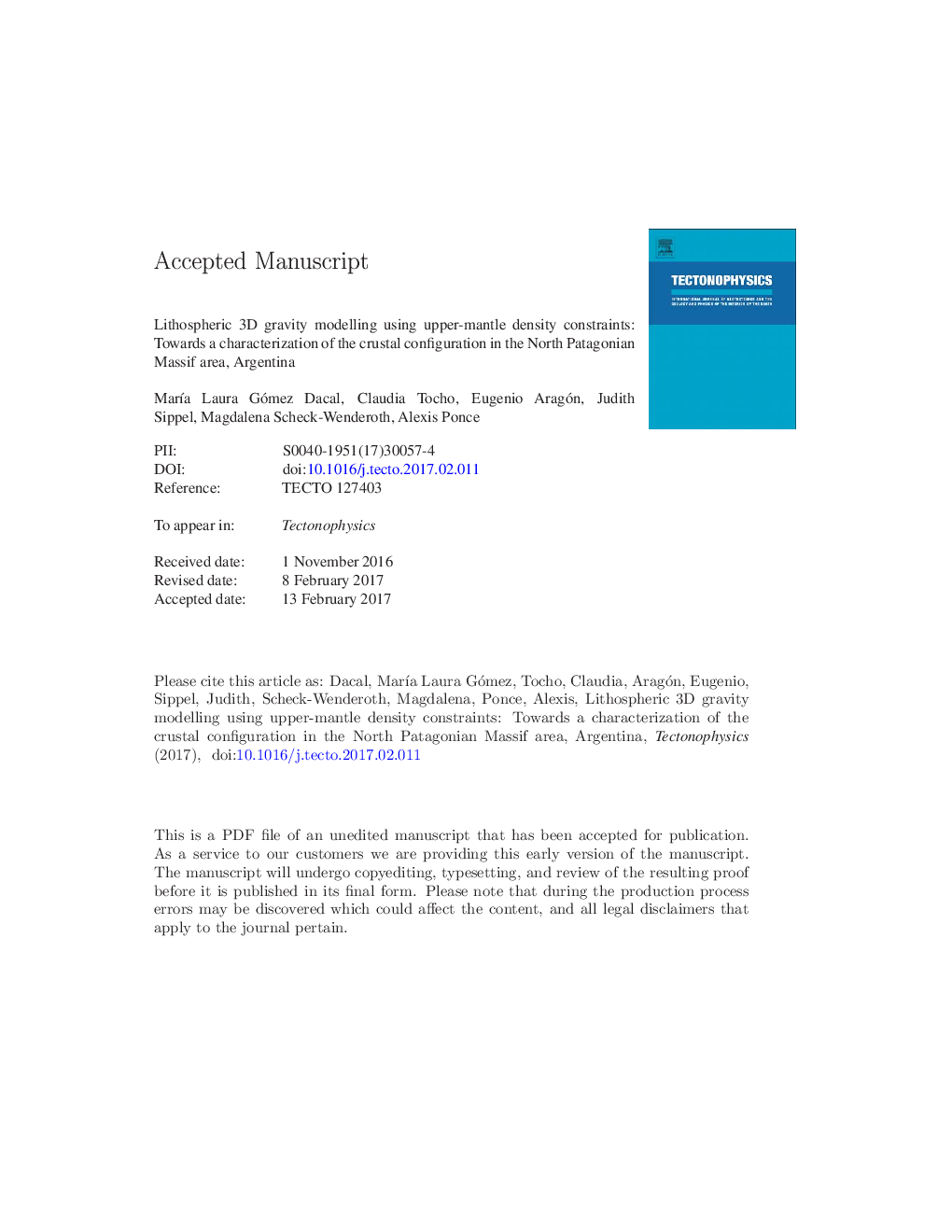| Article ID | Journal | Published Year | Pages | File Type |
|---|---|---|---|---|
| 5781859 | Tectonophysics | 2017 | 39 Pages |
Abstract
The North Patagonian Massif is an Argentinean plateau that has an average height of 1200Â m and stands from 500 to 700Â m above the neighboring areas. During Paleogene, it suffered a sudden uplift of more than 1200Â m without noticeable internal deformation; thus, it could be related to isostatic disequilibrium. To shed light on the geodynamic development of the area it is necessary to characterize the present-day configuration of the crust. In this study, a lithospheric-scale 3D density model was developed by integrating all the available data of the area with the objective of assessing the depth of the crust-mantle discontinuity (Moho). During the construction of the initial density model, we tested different mantle density scenarios obtained using P-Â and S-wave velocities from tomographic models, converting them into densities and comparing the conversions with densities obtained from xenoliths. Below the North Patagonian Massif plateau, we have derived a Moho depth between 40 and 50Â km which is from 2 to 7Â km deeper than its surroundings. There is an evident correlation between high topography and deep Moho that would indicate isostatic equilibrium at present. The model results provide a new approach to the Moho depth in an area where there is no seismic constraining information about this discontinuity. In addition, we found a spatial correlation between the variation of the mean crustal density and the location of the Paleozoic terranes that were proposed to constitute the basement of Argentina.
Related Topics
Physical Sciences and Engineering
Earth and Planetary Sciences
Earth-Surface Processes
Authors
MarÃa Laura Gómez Dacal, Claudia Tocho, Eugenio Aragón, Judith Sippel, Magdalena Scheck-Wenderoth, Alexis Ponce,
